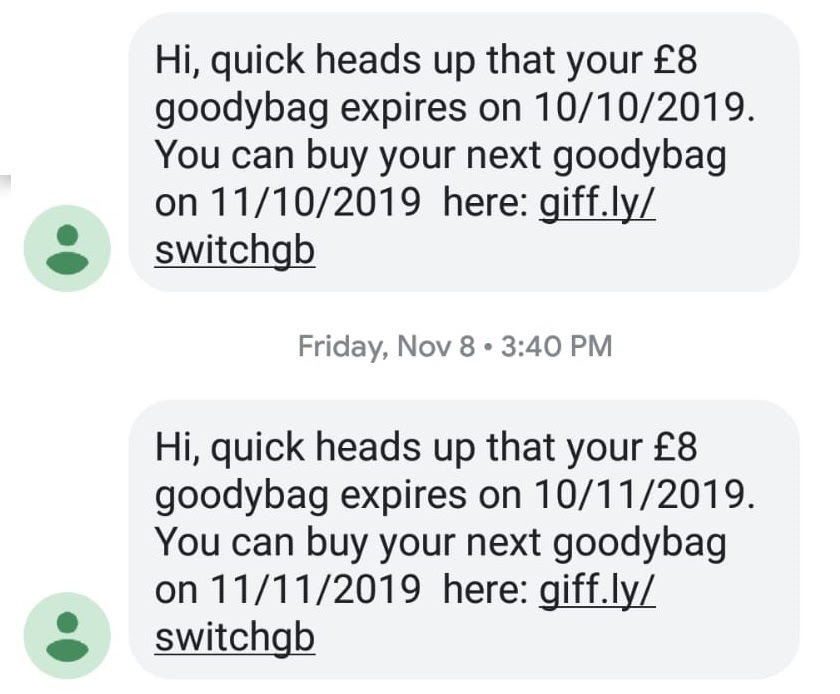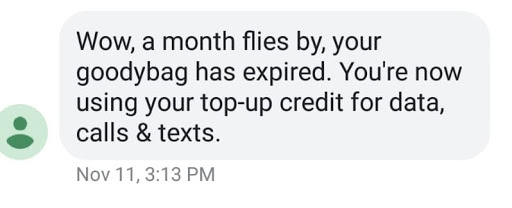5 Hacks That Will Blow Up Your SMS Marketing Strategy
Email, search, and social media are leading the way in how we reach new prospects and keep current customers engaged with our business. Digital marketing is becoming increasingly mobile first, and therefore it’s really important to find a way to engage with folks directly on their mobile devices. However, the prevalence of smartphones has tricked brands into largely focusing their marketing efforts on mobile websites.
Ecommerce businesses have focused so much on online platforms that many have forgotten the more traditional forms of communication. SMS messaging – yes, SMS messaging – is now considered traditional :). It’s one of the strongest marketing tools in this new economy.
1. Be clear with your messaging intent
Unlike an email, with SMS marketing you’re limited to 160 characters, which doesn’t give you a lot of wiggle room. Don’t worry about the technical details—sms messaging vs mms messaging, that’s a distinction that isn’t valuable right now.
Your SMS messages need to be clear and concise and should avoid using SMS abbreviations or all caps as they come across as spammy. Your special offers need to make the consumer feel like a VIP.
Each SMS message should have a single message point; for example, if the SMS is about a promotion, then mention the start and end date and which product or section is on offer with a clear CTA.
You don’t want to send an SMS about a promotion and in the same SMS talk about an event you’re hosting, as 160 characters doesn’t give you the benefit of discussing many topics.
2. Ask yourself where the value is in this SMS for your marketing campaigns
There’s nothing more annoying than ecommerce businesses sending continually promotional SMS messages. Because no Wi-Fi is required for SMS messages, they appear on the homescreen of most phones and are super annoying if they aren’t personalized. However, if you use context and intent to contextualize your messages, you’re going to see a spike in conversion rates.
Value can come in many forms and is not just limited to promotions for every sms campaign; for example, here’s an SMS message sent by Nike after I bought a product from their site. On the day of delivery they sent an SMS message letting me know what time my order would arrive, the name of the driver, and how I could change my delivery options if I was not at home:

Think about how the customer will benefit from the SMS. In the example above, I knew what time I needed someone to be home to sign for my package and how to edit my delivery if I was not available. The text was a great follow up to help provide value.
Here’s another example from mobile phone provider GifGaff who let customers know that their package has expired and how calls will be paid for going forward:
3. Set expectations early on with sms marketing campaigns
If a store tells me that by opting in to their SMS messages I’ll receive one weekly promotional email and all delivery alerts via SMS messages, then my expectations have been set. When I receive an SMS message, I won’t feel like I’m being spammed.
Consumers expect daily promotional emails in their email inboxes, but their SMS inbox is a little more personal, and because so few businesses use SMS marketing they may not know what to expect.
By telling them upfront what they’ll receive, it pre-frames them for your content and lowers your unsubscribe rate.
But keep in mind that text messaging is way more intimate than email or regular marketing, so make sure your audience understands you have a really good reason to be texting them. Marketing texts need to be as human as real texts, or you’re going to burn through this channel real quick.
4. Cross-promote your SMS messages with online channels
The more customers you have opting in to your SMS messages, the more people you can reach.
A great way to get customers onto your SMS list is to ask them to opt in at various touch points within your business. For example, when customers create an account (they’ll usually need to enter their phone number), set up a check box where they can opt in to receive SMS messages. You can do this at the same time you get your prospects to opt-in to any other messaging service you’re testing.
Also, use pinned social media posts where users can easily opt in to your SMS messages, along with options on your website and in-store if you also operate online.
Marketers often ask, “How do I grow my SMS marketing list?” If you’re already active on social media and have an email list of a decent size, then reach out to your followers and let them know you use SMS messages.
5. Shorten your links with a branded domain
For ecommerce businesses, some of your SMS messages are going to be for offers that include URL links. With 160 characters you’ll want to keep your URLs as short as possible. Mobile marketing is all about keeping it brief.
You can use free services like Bitly, which use their own branded domain, or you can use paid services such as Rebrandly that can include your own domain in the URL.
The shortened links help you track open rate as well. You can’t manage what you can’t measure.
But keep in mind that your promo codes on mobile need to be short as well. This requires your team to get creative, as you need to have short codes, but a large number of unique codes so you can track campaigns granularly.
Here’s an example from GiffGaff using their own branded URL. It looks more professional, clean, and trustworthy than if they used their entire URL string or a free service like Bitly:

I advise using your own domain as it makes your SMS messages more trustworthy, look nicer, and will get you a lot more clicks.
Ready to blow up your SMS marketing strategy?
SMS marketing is a powerful tool to grow your revenue and improve your after-sales service, yet it’s rarely used by businesses and is almost a competition-free space for you to take advantage of.
These five hacks should help you get started with your SMS marketing strategy and grow your user base quickly.
